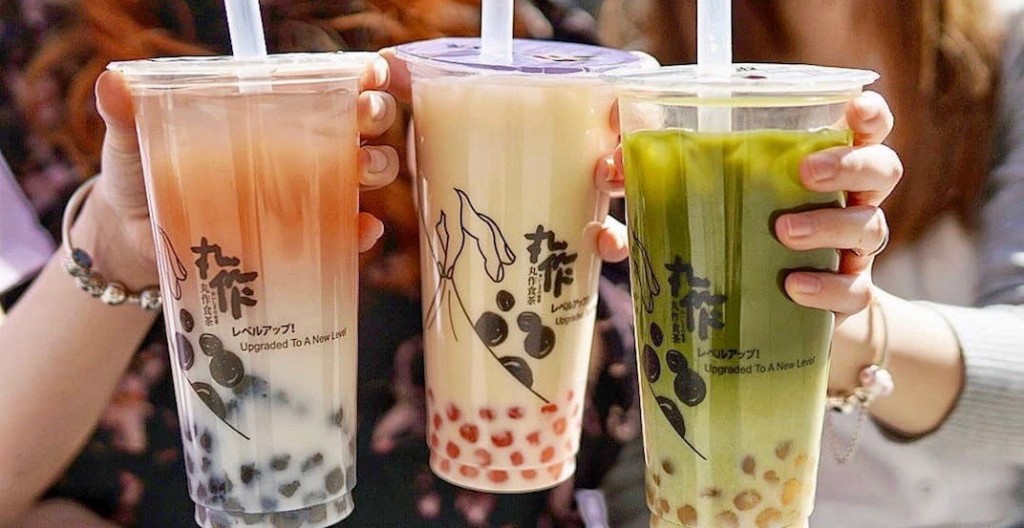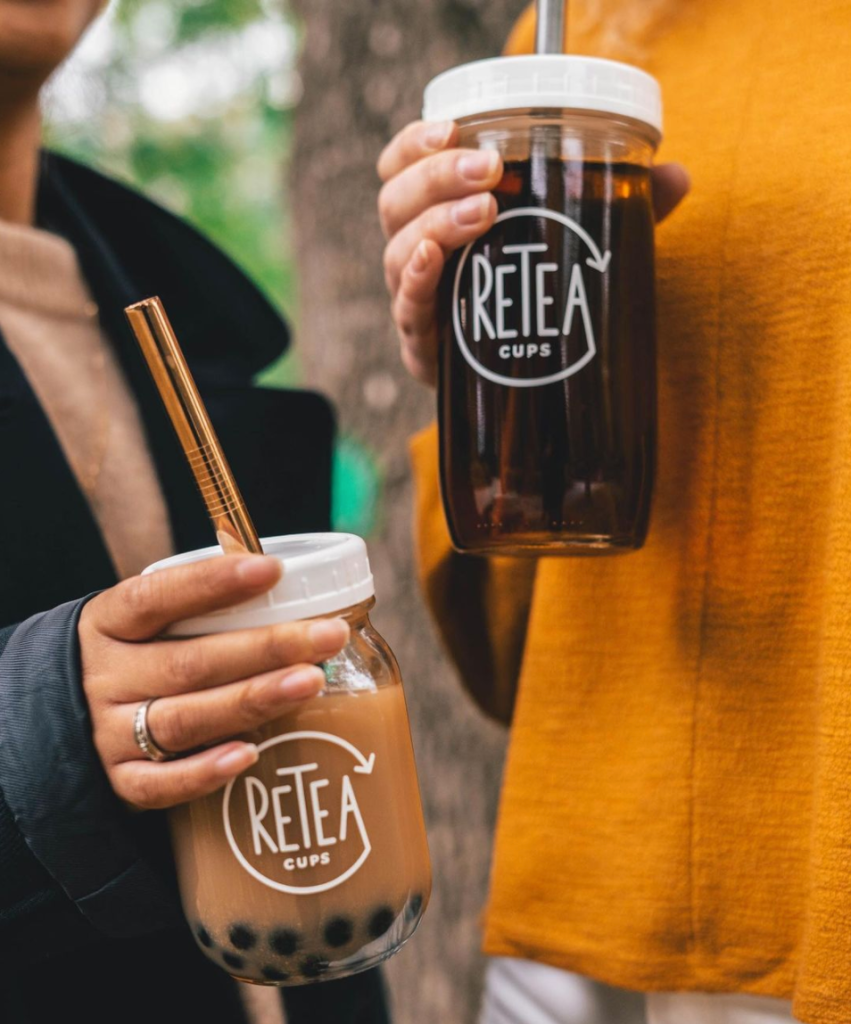Bubble tea, also known as boba tea or pearl milk tea, is a drink that has gained exponential popularity, globally over the past few years. The basic, traditional ingredients of this drink includes tea, ice, milk and tapioca balls; often referred to as bubbles, hence the name. Over the years as the bubble tea market expanded and grew, many variations of the drink have been developed introducing different fruity, juice-based varieties, sugar & syrup additives, different tapioca balls, and many other options to customize your drink. Bubble tea originated in Taiwan in the 1980’s. In 1949 a mixologist named Chang Fan Shu opened up his own tea shop where he started selling cold, hand shaken tea made with cocktail shakers, this eventually came to form the base of bubble tea. At this time in history, Taiwan had recently come out of a war and society began to change; the idea of consuming food and beverages for pleasure started to become more popular (Wong, M.H., 2020). By the 1980’s Taiwan had experienced rapid economic growth and the trend for tea beverages and leisure food continued to grow as more tea shops and restaurants began to open in the streets and suburbs. In 1986, artist and entrepreneur Tu Tsong He set out in search of an idea that would set his tea shop apart from the others. It was at a market in the city of Tainan where stumbled upon tapioca balls, a snack from his childhood, and decided to experiment with them by adding them to his green tea. He then started playing around with this idea, making different variations, the one that stuck and the drink we all know today being bigger, black tapioca balls added to your milk tea. He quickly opened his first tea shop called Hanlin, where he began selling this drink and quickly it became the hottest item on the menu (Wong, M.H., 2020). Since then the market has grown exponentially with bubble tea shops and franchises going up all over the world. In 2019 the bubble tea market value was $2.4 billion and is estimated to grow to $4.3 billion by 2027 (Sangwai, V., & Deshmukh, R., 2020). This market continues to grow at a steady rate as the natural and organic trend in society continues to grow, as consumers continue to search for healthy alternatives and as the market continues to expand their wide range of products to offer, incorporating many dietary concerns so that anyone can enjoy a delicious bubble tea, suited to their flavour.
One huge downfall to this growing market is the vast amount of single-use plastic pollution it creates. Due to the uniqueness of this drink it requires a lot of single use plastic; of course, the plastic cup itself, then a plastic seal on top, and lastly custom, large plastic straws in order for the tapioca balls to travel.

In the take-make-dispose mentality we live in today, single-use plastics are a huge aspect of our daily lives. These plastics are used for a couple minutes or hours, then they are quickly and often conveniently thrown away, remaining in our environment for hundreds of years. In 1950, roughly 2.3 millions tons of plastic was produced, compared to 2015 where approximately 448 millions tons of plastic was produced. (Parker, L., 2019) This is an increase in production of roughly 19,378% in only 55 years. As plastic production continues to grow so does the severity of the problem. Every year, 8 million tons of plastic enters our oceans, of this approximately 80% is single-use plastic (McDermott, K. L., 2016). This plastic entering our oceans has extreme effects on the health of our oceans, marine life and society. With plastics being able to travel all over the world through our oceans currents it introduces the possibility of alien species being able to use these floating plastics as rafts or vessels to enter into a new ecosystem and have potential devastating effects. Plastic also affects the coral reef by covering and suffocating them or blocking the essential sunshine needed to survive. (Guern, C. L., 2019). Another devastating effect of single-use plastic in our oceans is the impact it has on marine life. Most of the deaths due to plastic are caused by entanglement or starvation. We are seeing more and more animals with pounds of plastic stuck in their stomachs, birds and sea animals tangled and suffocated in plastic bags and packaging and more and more turtles with deformities due to single use plastics like straws in the nose, or a deformed arm from can packaging. Not only does single-use plastic affect our oceans but it also affects society. The health and safety of communities along coastlines are affected when their main source of income and food is devastated by the plastic bombarding their coast. Another concern to society is microplastics; plastics in our oceans have been shown to concentrate pollutants up to a million times their level in the surrounding seawater (Moore, C., 2020), these plastics then face the many forces of nature including sun, waves, and wind which eventually break down these plastics into tiny, barely visible particles usually smaller than ⅕ an inch across (Parker, L., 2019). These tiny microplastics are ingested by marine life, making their way through the food chain until they eventually reach us, the consumer.
With all these issues related to single-use plastics it’s extremely important that we have companies who are striving for change by creating sustainable, reusable products allowing us to decrease our use of single-use plastic and essentially decrease the severity of this issue over time. I now introduce to you a student-run business that is doing exactly that; Retea. Retea is a company created by University of Guelph student, Toby Zhou during her second year of university. Toby and her peers were huge fans of bubble tea but Toby quickly recognized just how much single-use plastic waste her favourite drink produces. With the issue at hand, Toby began extensive research into the bubble tea market and was shocked by the lack of, to complete abundance of reusable cups for the delicious drink. This pushed her into making her own version of a reusable bubble tea cup and quickly word spread, and demands for this cup poured in from family and peers all over. She realized this was a common concern for many eco-conscious bubble tea fans and brought her friends Alvin Zheng and Louise Delfin onto her team and together they built their company and brand into what it is today… They offer a wide range of products from the cups, lids, and straws alone, to different sets including DIY bubble tea sets, their classic sets which include the cup, lid, straw and straw cleaners or a gift set which includes the DIY bubble tea sets and their classic sets. Their cups come in two different sizes original (750ml) and mini (500ml) and also have the option for their original design or a custom design.

Not only do they sell the physical cups themselves but they also sell the contents of what can go into that cup; loose leaf teas. Retea sources all of their loose leaf teas ethically and locally from a Canadian Farm-to-Cup tea company called Genuine Tea. Genuine Tea was created David and Sarah with the simple dream of sharing their love for tea and adventures with others. They pride themselves on “leading the Third Wave Tea movement” in Toronto. This means they aim to change the way Canadians perceive tea, redirecting the current perception away from being something that is simply quantiful and convenient and towards something that is fresh and quality. They want to move away from the current method of selling tea where it is sourced from multiple sources, shipped in large containers, measured by the ton, bid on by big corporations for the lowest price/ kilo, then blended and shipped out to be re-packaged and branded. This current method of selling results in the farmers and workers who have poured their souls into growing and producing this tea receiving very little compensation for their hard work, as well as there being almost no transparency as to where, when and who produced your tea. The purpose of the Third Wave Tea movement is to provide consumers with full transparency as to where the tea in your cup has come from, allowing these dedicated tea farmers to receive the acknowledgement, appreciation and compensation they deserve.
As a University of Guelph student, Toby is not in this venture alone and is currently receiving support as an entrepreneur through the Hub Incubator Program. The Hub Incubator program offers U of G student and alumni startups with funding, office space, business services & resources, entrepreneurial workshops and acess to experienced mentors to help develop a strong business model that can be tested & scaled to allow for growth within these entrepreneurs businesses. This program provides startups with a space that fosters creativity and is filled with like-minded people, allowing you to build your network, gain advice and support, and stay motivated to achieve your entrepreneurial goals. In talking with Toby, although she only joined the program this semester, she said she has already been able to connect to many other entrepreneurs allowing her to learn new, important skills and develop her knowledge in what it takes to be an entrepreneur…
Retea is taking a huge step in the right direction towards sustainability. They were able to recognize a huge issue in this market and quickly act on it by providing a sustainable & simple solution for those eco-conscious consumers. Retea will reopen for orders January 20th at 12 pm… If you, or someone you know is a fan of bubble tea, check out their website, read more about them, and possibly support the amazing venture of this University of Guelph student!

